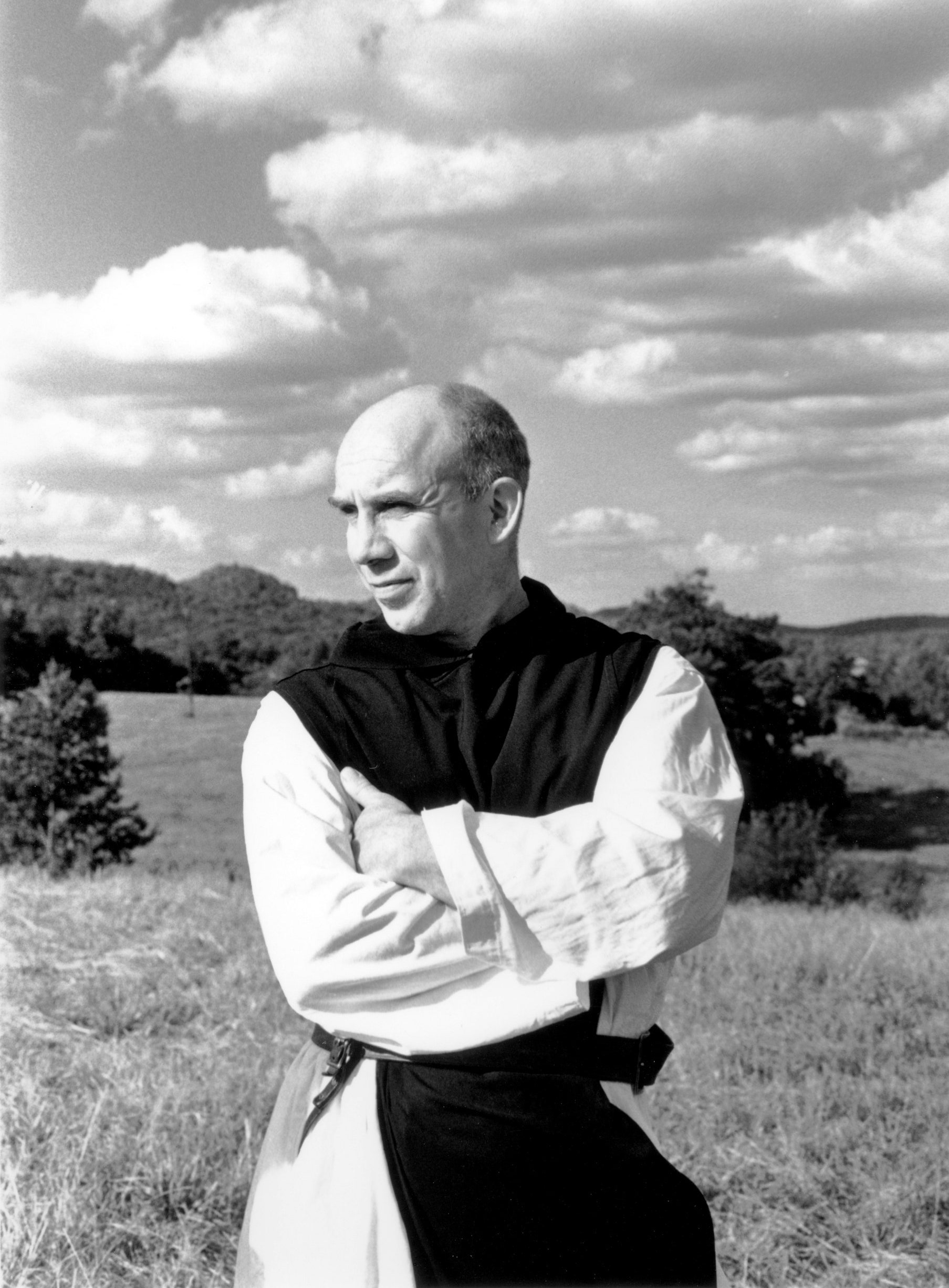
Thomas Merton [Source: newyorker.com] 
[Source: goodreads.com]
[This article continues CAM’s series into suspicious deaths and political assassinations. Today marks the 80th anniversary of Thomas Merton’s entry into the Order of Cistercians of the Strict Observance (O.C.S.O.), also known as the Trappist Order, at the Abbey of Our Lady of Gethsemani near Bardstown, Kentucky.—Editors]
The Trappist monk Thomas Merton might well have been the most significant Roman Catholic thinker and writer of the 20th century. His 1948 autobiography, The Seven Storey Mountain, sold more than 600,000 copies in its original hardcover edition and, in one version or another, has remained continuously in print. Its Kindle edition as of this writing has 803 customer reviews, with an average rating of 4.6 out of 5 stars.
Merton was a prolific writer. The Thomas Merton Center at Bellarmine University in Louisville, Kentucky, lists 106 books that he authored, 42 of which were published before his mysterious, violent death on December 10, 1968, while he was attending a monastic conference near Bangkok, Thailand.
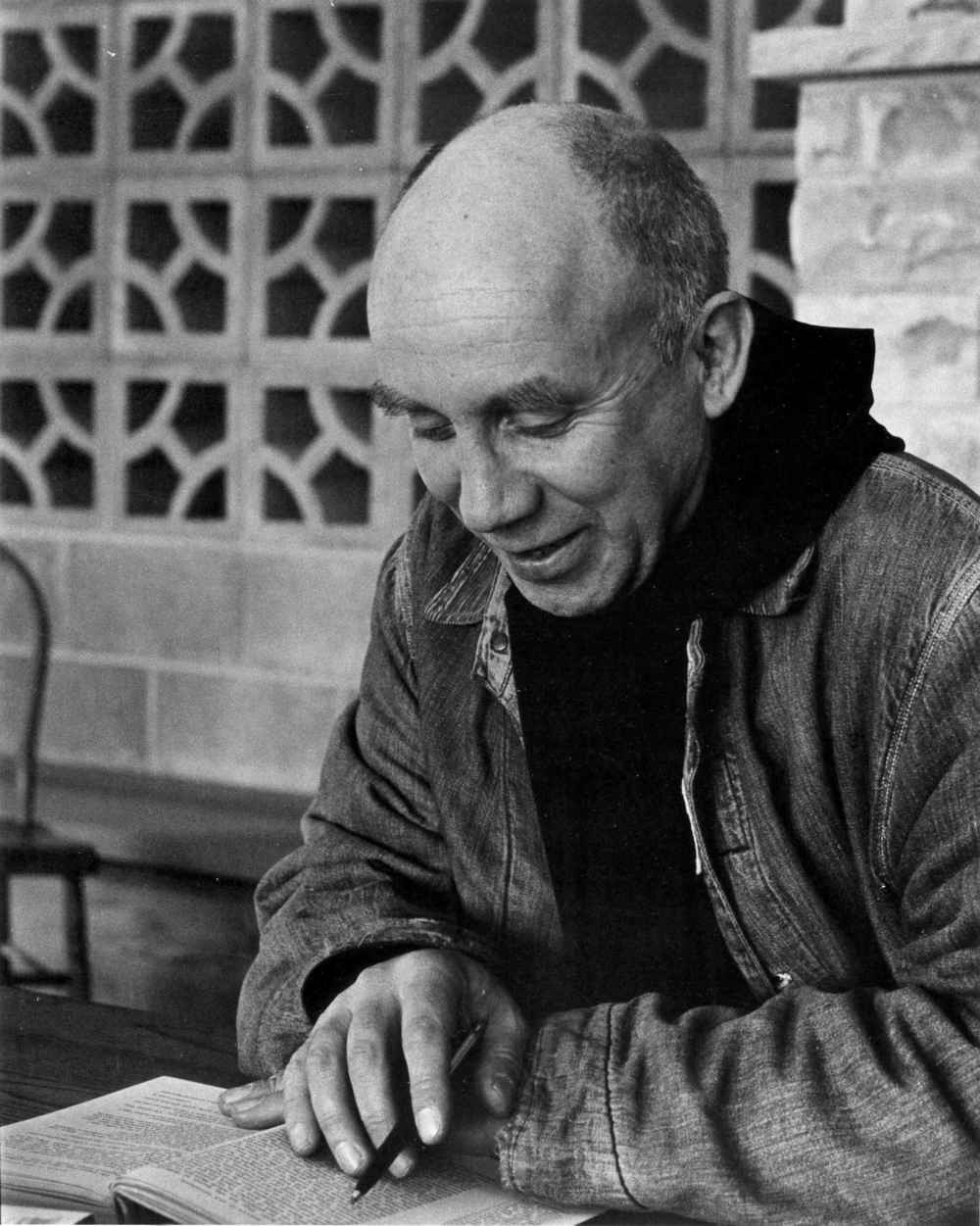
Merton’s writings, until the 1960s, had been almost all of a spiritual nature. In 1960, however, he wrote to a fellow Catholic priest and confidante, “It seems to me that it is very necessary to take a political stand in these times and I have been, I regret to say, foolishly apolitical.”[1]
His primary concern at that time was the danger of a nuclear war. His fear would be heightened by the Cuban Missile Crisis of October 1962. He had to circulate his powerful treatise Peace in the Post-Christian Era in mimeograph form, though, because the Abbot Primate of his order in France had forbidden his publishing any book dealing with questions of war and peace as political writing inappropriate for a Catholic monk.
He also had an extensive and influential mailing list, including Attorney General Robert Kennedy’s wife Ethel, whose family, the Skakels, were major benefactors of Our Lady of Gethsemani Monastery, where Merton had resided since late 1941.[2] Moreover, his writings carried a lot of weight because of the power of his prose and his great moral authority.[3]

As the 1960s wore on and the Vietnam War heated up, his attention turned more toward opposition to President Lyndon Johnson’s futile pursuit of victory in that horribly destructive war. The prominent anti-war Jesuit priest Daniel Berrigan, who looked up to Merton for guidance, was one of his most frequent correspondents.
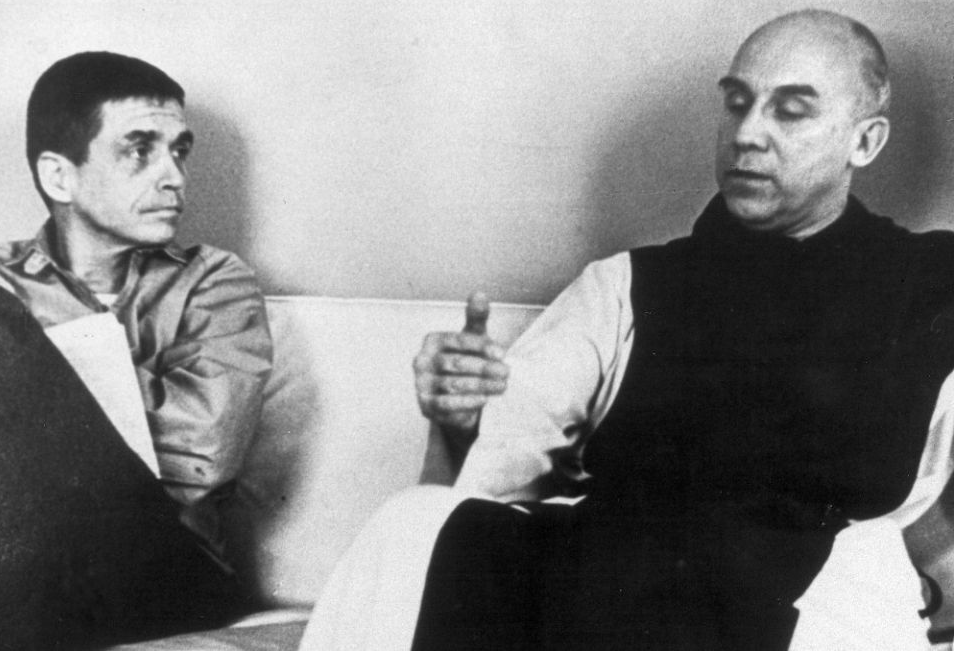
Although the general public might not have been aware of Merton’s anti-war activities, they could hardly have escaped the attention of our clandestine community. A passage from Phillip F. Nelson’s review of The Martyrdom of Thomas Merton could well be telling:
A document I recently obtained, from Lyndon Johnson’s White House files—apparently kept in his well-known “mean letters folders/file cabinets”—was a letter dated February 20, 1965, from Rev. Thomas Merton. I believe it is but one document that might have caused the name of Thomas Merton to be added to other lists, both within the White House and those being maintained farther up, and across the opposite side, of the Potomac River, in Langley, Virginia. For Merton to have written Johnson, challenging his use of “sheer force” to contain “the spread of Communism in Asia . . . seems to me immoral and unjust, when they are used without wisdom” would be to question not only Johnson’s morality and wisdom, but probably his manhood as well. There were certain boundaries that could not be crossed with Lyndon B. Johnson, and those three would have represented, to him, three strikes.[4]
We should be reminded that in December of 1968, the year in which Martin Luther King, Jr., and Robert F. Kennedy were assassinated, even though Nixon had won the election in November, Johnson was still the president.
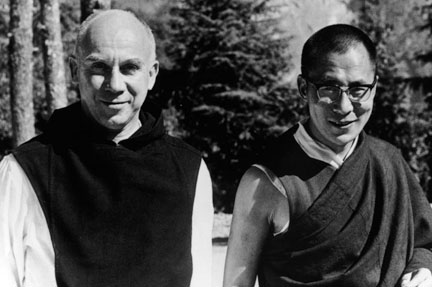
As with all such questionable events in our history, there is a great deal to be learned from examining the earliest reports on Thomas Merton’s death. To begin, we found three missing historic documents from Thailand, a doctor’s certificate, the death certificate, and the Foreign Service Report on the Death of an American Citizen.[5] The Thai officials concluded that sudden heart failure was the cause of Merton’s death. The prevailing belief, to the contrary, is that Merton was accidentally electrocuted as he emerged wet from a bath or shower.
Archbishop Rembert Weakland, O.S.B., who presided over the monastic conference in Thailand where Merton died and was Abbot Primate of the Benedictine Confederation at the time of the conference, provided the death certificate and doctor’s certificate to us. He had obtained these documents in Thailand before leaving. We found additional copies of these reports and the Foreign Service Report at the National Archives in College Park, Maryland. All of the documents have a stamp of authenticity from the U.S. Embassy in Bangkok.

In 2017, we sent copies of these documents to Dr. Paul Pearson, the Director of The Thomas Merton Center at Bellarmine University, which is a general repository of Merton documents. Pearson told us he had never seen them before, and he noticed something peculiar. The doctor’s certificate states that Merton’s body was “brought to the hospital for the purpose of an autopsy.” In fact, the body was not brought to the hospital, and no autopsy was performed. In sum, the official “heart failure” conclusion had been reached in the absence of an autopsy, but the official Thai documents lied about it.

Doctor’s Certificate
The doctor’s certificate exists in three versions, the one in the original Thai language and two others in English translation. Curiously, they are not in complete agreement with one another. Dr. Luksana Nakvachara completed and signed the doctor’s certificate, dated December 10, 1968, the day of Merton’s death.
Dr. Nakvachara wrote in English on the Thai language document that the death had been caused by, “Fainting–due to acute cardiac failure and electric shock due to accidental falling against the fan to the floor.” Dr. Nakvachara made no mention of the bleeding wound in the back of Merton’s head, observed by witnesses.
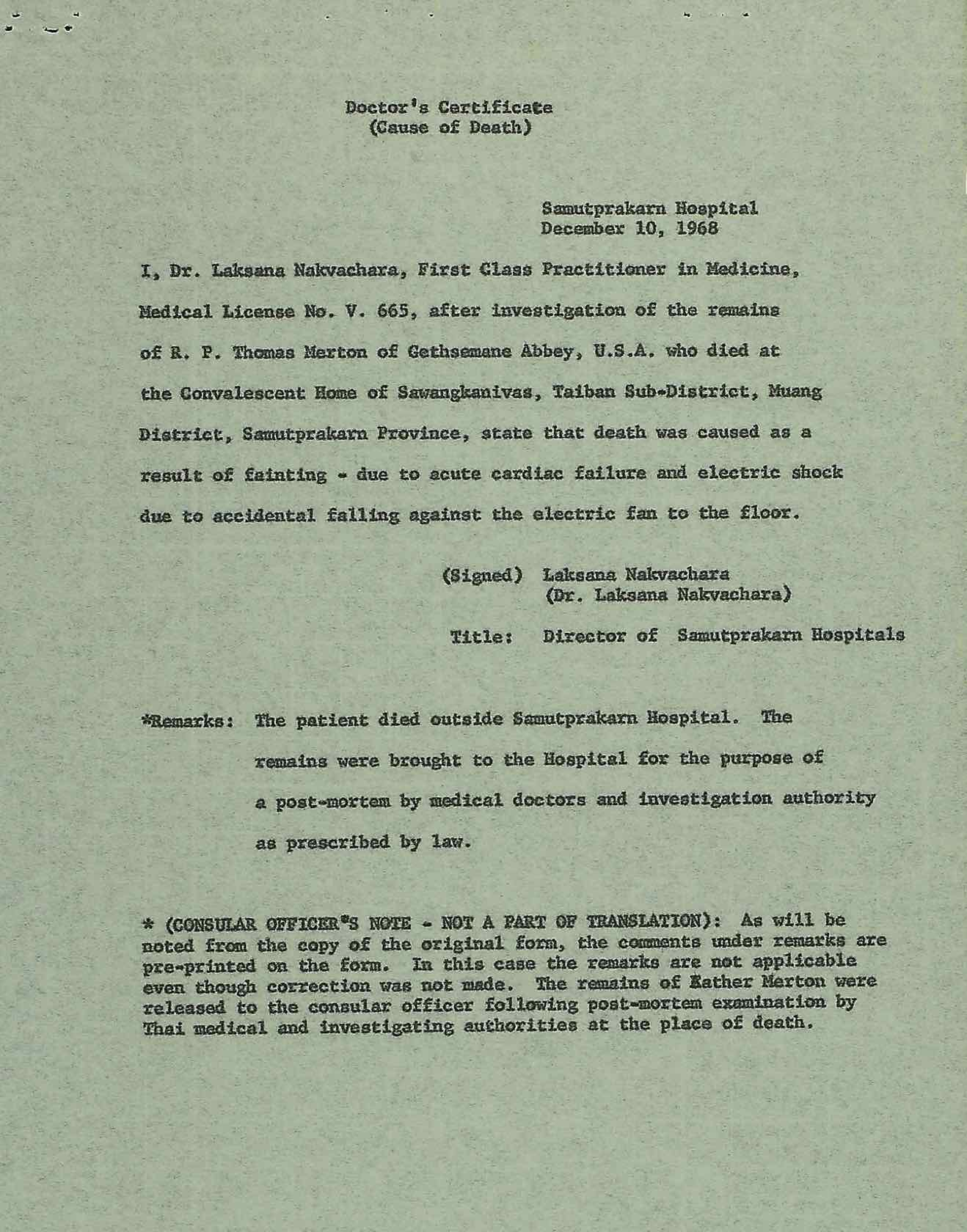
Near the bottom of the English translation of the document that we found at the National Archives, it states:
Remarks: The patient died outside Samutprakarn Hospital. The remains were brought to the Hospital for the purpose of a post mortem by medical doctors and investigation authority as prescribed by law.
Below these remarks, at the bottom of the State Department translation copy of the doctor’s certificate, one finds a comment from an anonymous American Embassy consular officer that states:
* (CONSULAR OFFICER’S NOTE – NOT A PART OF TRANSLATION): As will be noted from the copy of the original form, the comments under remarks are pre-printed on the form. In this case the remarks are not applicable even though correction was not made. The remains of Father Merton were released to the consular officer following post-mortem examination by Thai medical and investigating authorities at the place of death. [Emphasis added.]
The post-mortem at the hospital prescribed by law—that is to say, the autopsy—was “not applicable” in the death of Thomas Merton, according to the U.S. Department of State. The anonymous consular officer said, in effect, that what is written on the doctor’s certificate is not true.
The consular officer did say that Merton’s body had a “post mortem examination by Thai medical and investigating authorities at the place of death.” Whatever was done at the place of death—and was done there only—did not satisfy the eyewitness observers, many of whose letters we also discovered. They were deeply puzzled by the death scene and fully expected that a meticulous autopsy would be done to determine the cause of death.
Archbishop Weakland supplied another English translation of the doctor’s certificate to us. His copies bear a stamp and signature of authenticity from the U.S. Embassy. Weakland’s copy of the doctor’s certificate is almost identical to the State Department translation, with the exception of this note under the Remarks:
The patient died outside Samutprakarn Hospital. The remains were brought to the Hospital for the purpose of an autopsy by medical doctors and investigation authority in accordance with law.
Fr. Weakland’s translation copy and the original Thai language document, it should be emphasized, do not include the consular officer’s “correction” to the document, leaving the impression that a standard formal autopsy was performed at the hospital.
It is quite clear that no autopsy was done in “accordance with law” by Thai authorities. Dr. Nakvachara signed the doctor’s certificate that falsely stated Merton’s body had been brought to the hospital for an autopsy. Proper official procedures were not followed in the case of Merton’s death, even though paperwork made it appear that they were.
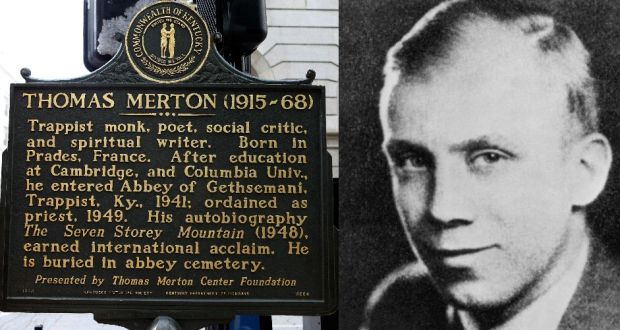
Death Certificate
The death certificate, dated December 11, 1968, declared flatly that the cause of death was “acute cardiac failure.” There are two English-version translations of the death certificate. The U.S. Embassy certified each as a true copy of the original. The National Archives translation of the death certificate also includes a translation of the police investigator’s note on the back of the death certificate. It states:
(Reverse Page): The remains may be removed through the area of Amphurmuang, Samutprakarn Province and they may be allowed to pass through other areas as a post-mortem examination has already been made in accordance with the law.
(Signed) Pol Lt. Boonchob Cheongvichit, Investigator
December 11, 1968
The handwritten note on the death certificate therefore agrees with the boilerplate on the doctor’s certificate that an autopsy had been performed in accordance with the law. This additional note by a police officer that a regular autopsy had, in fact, been done strongly suggests that something beyond mere inadvertence is involved here. The record of all witnesses at the scene reveals clearly that the body was not taken to a hospital because it never left the conference center before the U.S. military removed it and took it to a nearby U.S. military hospital.
The U.S. Embassy Report
The only U.S. government document regarding Merton’s death is the Report on the Death of an American Citizen by the U.S. Embassy in Bangkok, Thailand, and it repeats the official Thai death certificate conclusion that “acute cardiac failure” was the cause of death. It makes no mention of the “electric shock due to accidental falling against the fan to the floor” that is in the doctor’s certificate.
On December 27, 1968, the U.S. Embassy in Bangkok sent Merton’s monastery, the Abbey of Our Lady of Gethsemani in Kentucky, a letter, a copy of which we discovered in the collection of the papers of authorized Merton biographer Michael Mott at Northwestern University. That letter refers to enclosed copies of the doctor’s certificate, the death certificate with a translation, letters from participants at the conference who found or examined Merton’s body, and its own Report on the Death of an American Citizen. Those enclosures were not with the letter and Brother Lawrence Morey, the archivist for the abbey, informed us that they no longer have any of those crucial documents.
The Police Report
When we got in touch with Dr. Pearson, we found that the Thomas Merton Center did already have a copy of the Thai Police Report but, if we were to rely solely upon the American press to tell us, there might as well have been none. The cover letter of transmission to Abbot Flavian Burns of the Gethsemani Abbey is dated July 30, 1969. It would appear to end all ambiguity as to what they concluded was the cause of death. After saying that they had examined the fan and that it was defective and potentially lethal, they write:
However, the Investigating Officer questioned Dr. Luksana NAKVACHARA, whose views were that Reverend Thomas Merton died because of:
- Heart failure,
- And that the cause mentioned in 1. caused the dead priest to faint and fall into the stand fan located in the room. The fan had fallen onto the body of Reverend Thomas Merton. The head of the dead priest had hit the floor. There was a burn on the body’s skin and on the underwear on the right side which was assumed to have been caused by electrical shock by the fan.
Although it might be clear that, according to the investigating Thai police, the doctor had concluded that it was heart failure alone that had caused Merton’s death, it’s obviously unsatisfactory. How does a dead person faint? How could the doctor reach such a conclusion on the spot without conducting a formal autopsy? And what an enormous coincidence it had to be for a person to die of natural causes, fall into a curiously mis-wired fan that could have killed him had he not been dead already, and somehow the fan he had fallen into would end up lying across his body with the body lying perfectly straight with the arms by its side!
Furthermore, like the doctor’s and death certificates, it makes no mention of the bleeding wound in the back of Merton’s head, though perhaps it makes a slight nod in that direction by telling us that his head had hit the floor.
As it happens, Dr. Nakvachara tipped his hand early to key witness Fr. Celestine Say, OSB, who was one of the three monks to enter Merton’s room to see his dead body with the fan lying across it. He told Fr. Say that they were going to reach the natural death conclusion to avoid “problems.” The witnesses had been so troubled by what they had seen that they decided to photograph the body just as they found it to share with the investigating police. But, then, Fr. Say was so disturbed by what the Thai doctor had told him that he decided not to tell the police about his photographs for fear that they would just confiscate his film, which happened to have a lot of other photographs on it that he treasured.
Fr. Say had taken two photographs of the body from different angles using different shutter speeds. In due time, he sent a print and the two negatives to the Gethsemani Abbey. Only one of the negatives could be made into a photograph with the technology available at the time. We would discover those negatives—with no identification—among the papers of the first authorized biographer of Merton, John Howard Griffin, at the library of Columbia University. The library was able to develop both photographs for us and thanked us for identifying what was on the negatives.
We were surprised to learn that the Thomas Merton Center actually had a copy of that one print but had hardly recognized its significance because, in his 1984 authorized biography, The Seven Mountains of Thomas Merton, Michael Mott tells us that Say took “several photographs” but falsely states that he took them later in the sequence of events than he did.[6] Mott works hard to convince readers that Merton was wet from a shower when he encountered the faulty fan. Say took his photographs, Mott strongly suggests, after the pajama shorts he is seen wearing in the photograph had been put on the body for modesty’s sake. With access to the same witness letters that we have read, and surely even more, Mott had to have known that what he was writing was not true.
The Press
As far as American press coverage of Merton’s death is concerned, they have gone with two very sketchy initial reports that appeared in the nation’s newspapers on December 11, 1968, and have added hardly anything to them as the years have passed. Though the reports might have been very unsatisfactory in their sketchiness and the fact that they are not in complete agreement with one another, they seem to have been sufficiently satisfactory for the press that they have felt no obligation to investigate further.
The first is by John Wheeler of the Associated Press, with a dateline of Bangkok. His opening sentence is, “Thomas Merton, the Trappist monk who wrote ‘The Seven Storey Mountain’ and other best sellers was electrocuted Tuesday when he moved an electric fan and touched a short in the cord, local Catholic sources reported.” He doesn’t identify the sources, and they must not have been very good sources, because the third paragraph reads:
Merton’s body was found late in the afternoon on the floor of a room he was occupying during a visit to Bangkok. A doctor who was summoned says the monk’s heart failed after the electric shock.

One should have expected someone based in Bangkok to have been a bit more precise about where Merton died and what the man was doing there. The Catholic monastic conference that Merton was attending was at the Sawang Kaniwat Red Cross conference center in the town of Samutprakarn a few miles to the south of Bangkok proper.
Wheeler’s very next sentence reads, “A priest at the Church of St. Louis said Merton was not missed when he failed to show up for lunch.”
The Church of St. Louis is a Catholic church in the Bangkok area, but this was a conference for monks, and it is unlikely that this anonymous priest was even in attendance. If, perchance, he had been there, he would have surely known that Merton did eat lunch with the group after completing a morning presentation that he had given. Wheeler appears not to be giving us the true source of his information. He is correct to say that the doctor said that Merton’s heart failed, but by writing “after the electric shock” right after that he leaves the impression that the Thai authorities had concluded that the shock caused Merton’s heart to fail, supporting his “electrocution” assertion, and, as we have seen, that is not accurate.
The report by Israel Shenker of The New York Times adheres more closely to the known facts at the time, as sketchy as they might have been. He tells us that Merton was attending a congress of Roman Catholic monks of the Benedictine and Trappist (or Cistercian) orders 10 miles south of Bangkok, that there were 33 monks in attendance, and that the general topic was “problems of monasticism in the Far East.” Then Shenker writes, “Merton was found in his room at 4 P.M, badly burned by the standing electrical fan that had toppled over on him. The cause of death was officially listed as heart failure.”
Before that Shenker had written that a cable from the American Embassy in Bangkok with the news of Merton’s death had arrived at the Gethsemani Abbey, and one gathers that it is from that cable that Shenker had gleaned his information, by way of the abbey. Like the report on the official cause of death, Shenker’s report on the time of the discovery of the body would prove to be accurate.
He did not say flatly that Merton’s “heart failure” was caused by the shock that he had received from the fan, but he subtly leaves the impression that that was the case. Even so, the editors at the Times apparently thought that Shenker had reported too many details. The Israel Shenker article that was carried by the New York Times News Service that went out to newspapers around the country clipped out the sentence that begins with the time of the body’s discovery. Instead, we have these two sentences: “A spokesman for the abbey said a cable with the news had arrived from Bangkok. There was no indication of cause of death.”
The Times editors, in short, simply falsified Shenker’s report in one key aspect for the larger national audience.
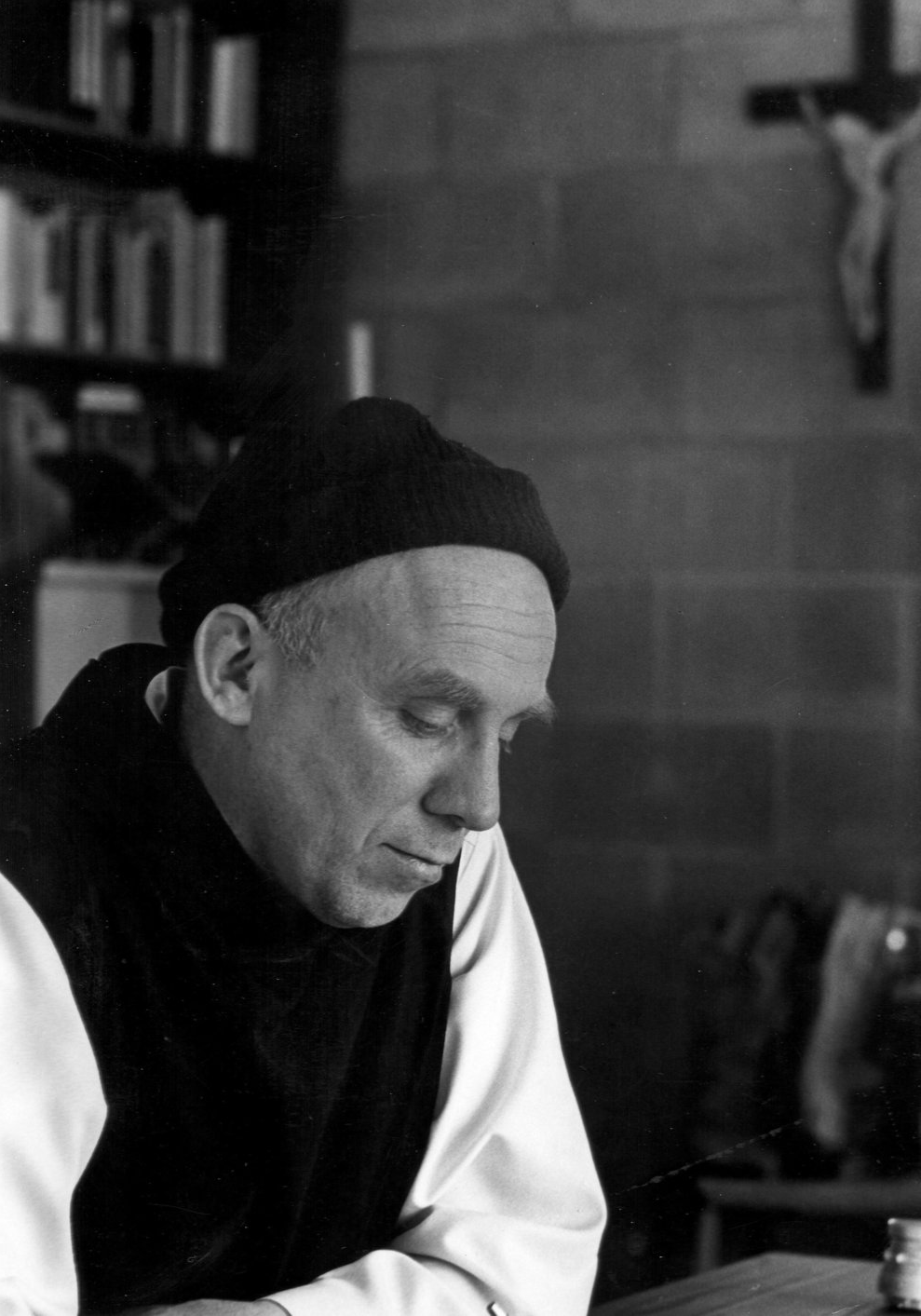
As one might expect, the newspapers nearest to the Gethsemani Abbey did not rely upon the Associated Press or The New York Times for their information about Merton’s death. In a long front-page article on December 11, Joan Riehm of the Louisville Courier Journal, after saying that Merton had died in Bangkok, wrote, “Spokesmen for the Gethsemani Abbey in Trappist, Ky., near Bardstown, did not know the cause of death.” Bardstown is 41 miles south of Louisville.
Since the abbey’s source of the news of Merton’s death was that cable from the U.S. Embassy in Bangkok that also said the official cause of death was heart failure, which The New York Times had reported, it appears that what the abbey told the Courier-Journal is not true.
Sixty-three miles to Bardstown’s east, in Kentucky’s capital city, the Lexington Leader and the Lexington Herald both ran John Wheeler’s AP story stating flatly that Merton was electrocuted as he attempted to move a faulty fan and that he had missed lunch.
Bardstown, the county seat of Nelson County, with a population of 11,700 as of 2010, has a newspaper, The Kentucky Standard. It is a daily that did not report Merton’s death until the next day, December 12. In a front-page article without a byline, the first sentence reads, “Thomas Merton, the Trappist monk with a worldwide reputation as an author and philosopher, died Tuesday, in Bangkok, Thailand.”
Considering the fact that they had an extra day to get things right—or the abbey had an extra day to formulate what they wanted to get out to the public—the article’s third paragraph is most intriguing:
Spokesmen at the Trappist monastery at Gethsemane [sic], Nelson County, said it would be several days before they would have any information as to cause of death, or arrival of the body in the United States.
The plot thickened with an article that appeared in The Kentucky Standard exactly a week later when a Requiem Mass was held for Merton upon his arrival at the abbey. It begins this way. “The body of Thomas Merton, known in monastic life as Father Louis, now lies in its final resting place.” Ten paragraphs into the article we have this:
Father Louis was accidentally electrocuted while visiting in Thailand. His body was found late in the afternoon, December 10, in his room at Sawangke Vivas, 15 miles south of Bangkok. He was lying on the floor with an electric fan on top of him. His body had several cuts and burns. Apparently he picked up a fan in the shower room to bring it into the bedroom.
The body was flown in an Army plane to Travis Air Force Base, near San Francisco, Calif., on Sunday. An autopsy was performed in Oakland, Calif. before the body was flown by commercial plane to Louisville Standiford Field arriving about noon.
One of the monks went to California to accompany the body home and to facilitate arrangements.
The article reads very much as though it were written by the folks at the abbey. This was the local small-town daily that was a day late in reporting Merton’s death, after all, and when it did it even misspelled “Gethsemani,” using the popular spelling for the Biblical garden. This article, also lacking a byline, seems to overcompensate in its concern for Church niceties, referring to Merton seven times in a short article as “Father Louis,” his given Catholic name upon his joining the monastery, and telling us that “Louisville Archbishop Thomas J. McDonough, dressed in crimson robes, sat nearby [principal celebrant Abbot Flavian Burns], allowing the Abbot, whom he outranked ecclesiastically, to have the honor.”

This hardly seems to be what the person who wrote that first Kentucky Standard article would have written. It reads like something for Church people from Church people. It’s also quite unlikely that any regular newspaper reporter in an American newspaper would have described the airplane that transported Merton back to the United States as an “Army plane.” Such transport planes were the responsibility of the Air Force.
Considering the very great likelihood that this article was composed by the abbey, the other “information” in the passage is very interesting. The cuts on the body are mentioned in a supposed early letter from the remaining Trappists at the conference to the Gethsemani Monastery that we have identified in our book as an almost certain fabrication. We provide a number of reasons for our presumption of inauthenticity, one of which is that the abbey cannot produce the original of the letter. No other reports mention any such cuts, and none is visible in either of the photographs of the body.
There were burns on the body and the fan was, indeed, on top of Merton’s body, but the notion that he might have picked up the fan to move it from the shower room to the bedroom is purely fanciful, stated nowhere else to our knowledge in any publication or in the entire body of evidence.
The closest thing to it is the statement by the very unreliable John Wheeler of the AP who said he was electrocuted while attempting to move the fan. This subsequent version is really absurd on its face. No one on the record mentions the fan ever having been in the shower room, and there is no reason for it to have been there. Merton would have had to unplug the fan to move it, so the fact that it had previously been in the shower room is irrelevant to the supposed electrocution. The writer of the article appears to be working overtime to somehow squeeze a shower into the Merton electrocution picture and has really botched the job of doing it.
The story of an autopsy having been performed by somebody somewhere in Oakland is also unique to this article, never seen before or since. It does not come right out and say that a formal autopsy confirmed the electrocution story that is being peddled, but that was apparently its purpose. Like the story of the fan in the shower room, it is almost certainly not true, and it is highly unlikely that it was invented by anyone at The Kentucky Standard.
For what it is worth, this is also the only report we have encountered of a Gethsemani monk having gone to California to accompany Merton’s body home and we cannot think of any purpose that it would have served except, perhaps, as a display of solicitude, done just as well in writing as in fact, and at much less expense.
The Abbey
The fact that not just The New York Times but also the Gethsemani Monastery backed away from its earliest report on the “heart failure” cause of death coming from the U.S. Embassy in Thailand, in effect, lying to the Kentucky newspapers about what information it had, is quite incriminating. It gets much worse for them with that hokey story about the supposed moving of the fan from the shower room to the bedroom and the autopsy that probably never took place.
From the beginning, going on very little information, the abbey as much or more than the American news media, seemed to be greatly interested in selling the story that Merton had been electrocuted by a faulty fan, even going so far as to plant the idea that the fan had been in the shower room, thereby bringing water into the picture, which is a well-known conductor of electricity.
It would get much worse for the abbey in 1973 with the publication of The Asian Journal of Thomas Merton, a compilation of Merton’s written observations during his travels before his arrival at the Red Cross conference center in Thailand.[7] Merton’s secretary, Brother Patrick Hart, wrote a postscript in which he stated that he had read all of the official reports and statements of witnesses and then he reconstructed the events based upon what he had learned.[8] He described Merton returning to the cottage after lunch and tells us in a matter-of-fact way that Merton “proceeded to take a shower.”
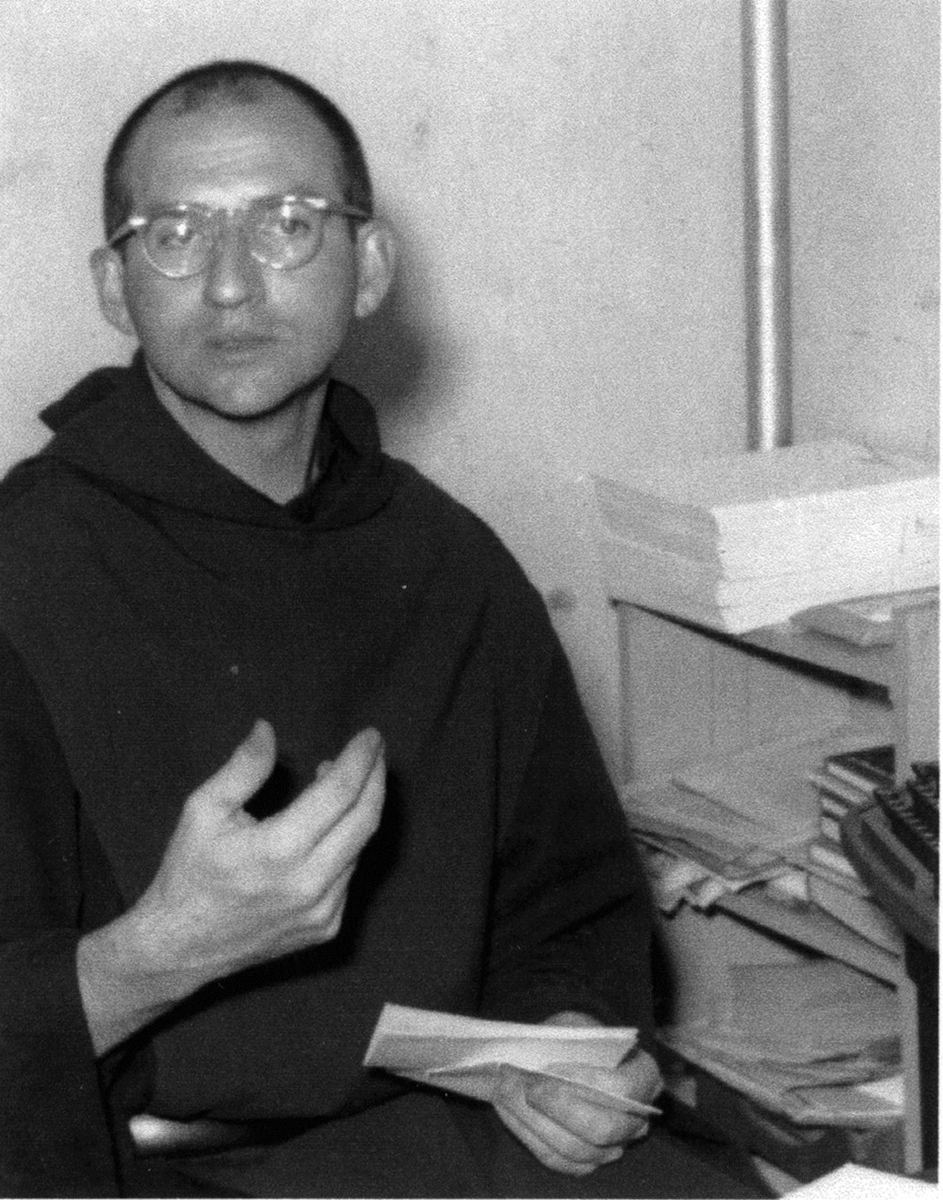
He had to have known that that was not true, because he knew that there was no mention of a shower in the official reports or witness statements and that the key witness, Fr. Celestine Say, who was within a few feet of the shower room in a bedroom with a permeable screen instead of a wall and had heard no shower running had said in a letter that Merton looked as though he might have been getting ready to take a shower. Br. Hart also confirmed to us that he had no actual evidence for his declarative assertion.[9]
Probably because it mentions the possibility that Merton had taken a shower, the book published for the first time what it had only sent out to its very limited mailing list eight days after Merton’s death, the aforementioned questionable letter by the remaining six Trappists at the conference as its Appendix VIII. That letter speaks of Merton being found lying on his back with a tall floor fan lying across his chest. The published version, though, omits three words without providing an ellipsis to show that words are missing. They are “in his pajamas.”
When the first letter was sent out, the story that Merton was wet from a shower had not yet been concocted and it was therefore okay to reveal that the body was clad in short pajama bottoms. With the conscious deletion of those three words, as co-editor of the book, Hart had lied again in furtherance of the fiction that Merton was wet from a shower when he came into contact with the fan.
In addition, Hart knew that the fan was not across Merton’s chest because he had certainly seen Say’s crucial photograph with the fan lying across Merton’s pelvis, where it would have been much less likely to cause heart failure. More than likely, the fan was not the same one that had been running quite well and shocking no one for a couple of days into the conference. Rather, it was most likely a rigged prop that would cause a mild shock while not causing a fuse to blow as a normally short-circuited appliance would have, giving the superficial impression that it had caused Merton’s death. A proper investigation would have settled these questions but, as we shall see, even Merton’s official biographer conceded that there was no proper investigation.
Because he was writing the authorized biography of Merton, which means everything he wrote was approved by the abbey, Michael Mott’s conscious falsification of the chronology of Fr. Say’s photographing of the body so as to leave open the possibility that Merton was naked upon just emerging from a shower also must be laid at the lap of the leadership of the abbey.
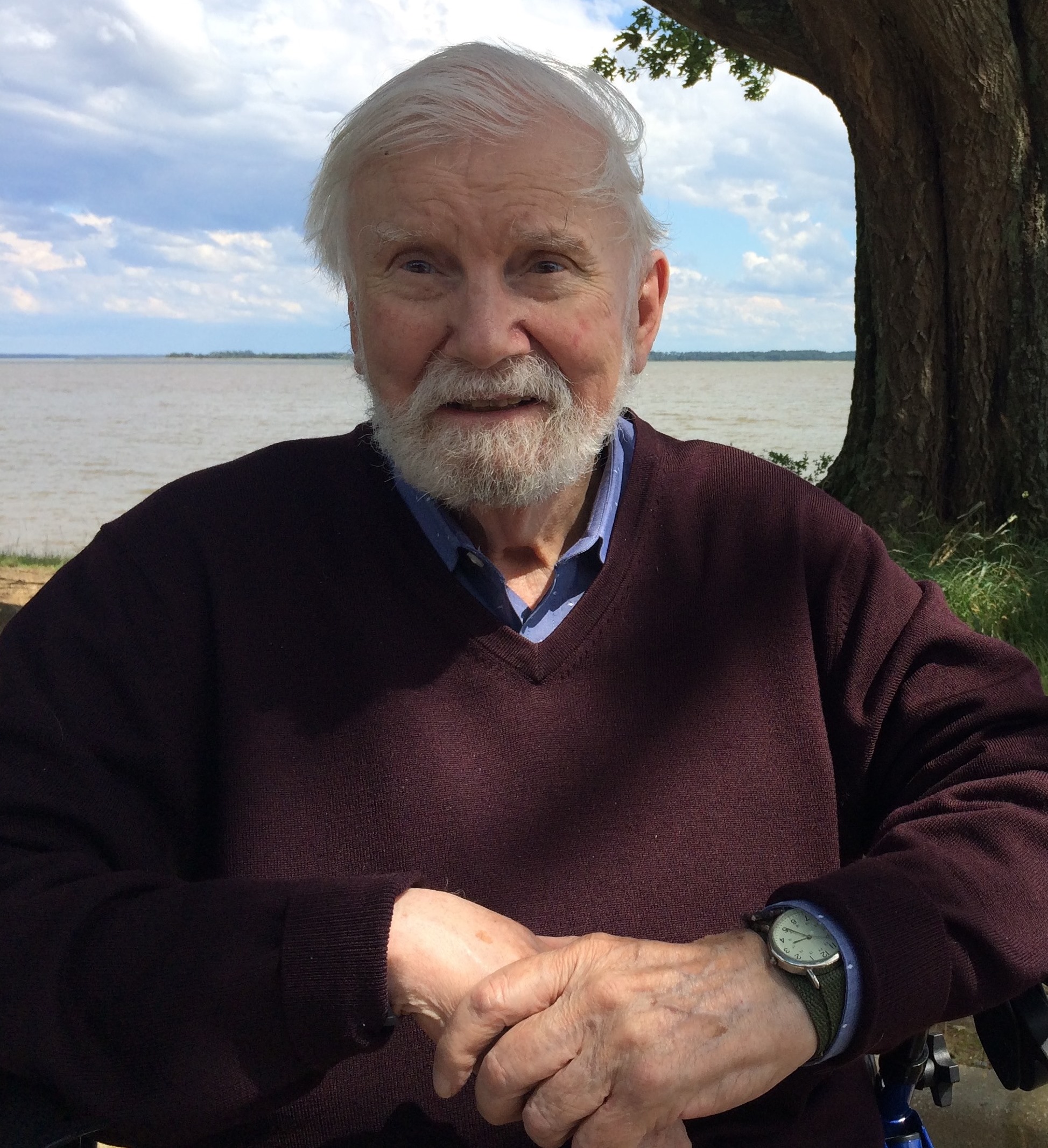
The abbey shares responsibility for Mott’s deceptions about Merton’s death with the group that appointed him, the Merton Legacy Trust. That group, nominally established by Merton himself in 1967 with a three-member board of trustees that apparently conducted all its meetings at the Gethsemani Abbey, is responsible for, among other things, disposition of the substantial proceeds from all of Merton’s books. Two of the first three trustees, ostensibly chosen by Merton, were employees of major New York City publishing companies and, through the years, their replacements would seem to have more connections to what has come to be called the Deep State than to the Catholic Church.[10]
Curiously, although Mott sells the shower story hard, he makes no reference to Br. Patrick’s flat assertion 11 years before that Merton had, indeed, taken a shower. Rather, he engages in conjecture, saying “What seems like the most likely reconstruction is that Merton came out of the shower either wearing a pair of drawers or naked.”[11] He never explains why he would seem to take the Merton shower as a given, when all the evidence is to the contrary.
Mott, probably to neutralize it should it come to light like he neutralized Say’s photograph, even has the same full quote from the Thai police report that we have provided above in which the conclusion is reached that Merton’s heart failed and the “dead priest” fainted and fell into the fan in his room. He virtually concedes that the Thai police engaged in a cover-up but without calling it that: “The police investigation had not inspired much confidence,” he understates, “Many felt electrocution was deliberately played down to protect the reputation of the conference center. It may have been so.”[12]
Mott fails to tell us that there were much deeper pockets involved had the monastery taken the course of action that any other surviving “family” (which the abbey, in effect, was) likely would have taken and filed a lawsuit. The fan was manufactured by Hitachi (which we learned only from witness letters) and the conference center was run by the International Red Cross, after all.
There is some irony in the fact that Mott suggests that the Thai police posited natural causes as the cause of death to cover up an accidental electrocution when, with his outright lies and equivocations, only a couple of which we have addressed, Mott posits accidental electrocution to cover up what was almost certainly a murder.[13]
What is most likely is that Mott and the Thai police were engaged in the same cover-up, and it was not done for anything so relatively benign as protecting the reputation of the local conference center. We would never gather from Mott what a corrupt organization the Thai police were or what corrupt associations they had, going back many years:
During the 1950s, Thai police, the Nationalist Chinese army, the French military, and the CIA adopted policies that allowed Southeast Asia’s mass opium addiction to survive and even thrive.[14]
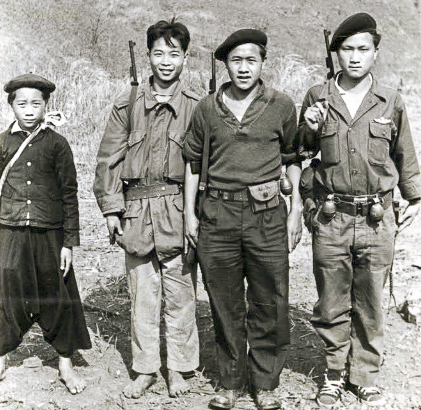
At the time of Merton’s death, the Thai government was also closely cooperating with the U.S. military in its prosecution of the nearby Vietnam War, which included the mass assassination campaign known as the Phoenix Program, in which the CIA was also deeply involved. One troublesome American monk would be just one more obstacle to victory in Vietnam to be removed, and there he was, right next door, far removed from scrutiny back home.

-
Roger Lipsey, Make Peace Before the Sun Goes Down: The Long Encounter of Thomas Merton and His Abbot, James Fox (Boulder, CO: Shambhala Publications, 2015), p. 159. ↑
-
“The collection of Merton’s correspondence at the Thomas Merton Studies Center at Bellarmine, still far from complete, contains letters to over eighteen hundred correspondents, and some folders hold more than two hundred items.” Michael Mott, The Seven Mountains of Thomas Merton (Boston: Houghton Mifflin Company, 1984), p. xvii. ↑
-
See David Martin, “Thomas Merton, Anti-War Hero”, January 29, 2018. https://www.dcdave.com/article5/180129.htm and “Merton’s Message Resonates as Nuclear Holocaust Looms, April 5, 2018 https://www.dcdave.com/article5/180405.htm. ↑
-
“The Mysterious Death of Thomas Merton, March 22, 2018, https://www.lewrockwell.com/2018/03/phillip-f-nelson/the-mysterious-death-of-thomas-merton/. ↑
-
The documents cited in this article can be found at http://www.themartyrdomofthomasmerton.com/documents.html. ↑
-
Mott, p. 566. ↑
-
Thomas Merton, The Asian Journal of Thomas Merton (New York: New Directions Books, 1973) [Patrick Hart, James Laughlin, and Naomi Burton Stone, editors]. ↑
-
Merton, The Asian Journal, pp. 344-347. ↑
-
In a response to his telephone query by voicemail as to what evidence he had for his shower assertion, Br. Hart responded on May 31, 2017, at 2:14 p.m., to Hugh Turley that he had no direct evidence, but that it was hot, and Merton must have taken a shower. ↑
-
See David Price, “The CIA Book Publishing Operations,” Orinoco Tribune, September 13, 2020, https://orinocotribune.com/the-cia-book-publishing-operations/. ↑
-
Mott, p. 567. ↑
-
Mott, p. 566. ↑
-
For a more comprehensive analysis of the shortcomings of Mott’s treatment of Merton’s death, see David Martin and Hugh Turley, “What We Know about Thomas Merton’s Death,” a paper delivered to Thomas Merton: Prophecy and Renewal, a Benedictine symposium in Rome, June 12-15, 2018. http://www.themartyrdomofthomasmerton.com/ewExternalFiles/What%20We%20Know.pdf. ↑
-
Alfred W. McCoy, The Politics of Heroin: Complicity in the Global Drug Trade (Chicago: Lawrence Hill Books, an imprint of Chicago Review Press, 2003), p. 17. ↑
CovertAction Magazine is made possible by subscriptions, orders and donations from readers like you.
Blow the Whistle on U.S. Imperialism
Click the whistle and donate
When you donate to CovertAction Magazine, you are supporting investigative journalism. Your contributions go directly to supporting the development, production, editing, and dissemination of the Magazine.
CovertAction Magazine does not receive corporate or government sponsorship. Yet, we hold a steadfast commitment to providing compensation for writers, editorial and technical support. Your support helps facilitate this compensation as well as increase the caliber of this work.
Please make a donation by clicking on the donate logo above and enter the amount and your credit or debit card information.
CovertAction Institute, Inc. (CAI) is a 501(c)(3) non-profit organization and your gift is tax-deductible for federal income purposes. CAI’s tax-exempt ID number is 87-2461683.
We sincerely thank you for your support.
Disclaimer: The contents of this article are the sole responsibility of the author(s). CovertAction Institute, Inc. (CAI), including its Board of Directors (BD), Editorial Board (EB), Advisory Board (AB), staff, volunteers and its projects (including CovertAction Magazine) are not responsible for any inaccurate or incorrect statement in this article. This article also does not necessarily represent the views the BD, the EB, the AB, staff, volunteers, or any members of its projects.
Differing viewpoints: CAM publishes articles with differing viewpoints in an effort to nurture vibrant debate and thoughtful critical analysis. Feel free to comment on the articles in the comment section and/or send your letters to the Editors, which we will publish in the Letters column.
Copyrighted Material: This web site may contain copyrighted material the use of which has not always been specifically authorized by the copyright owner. As a not-for-profit charitable organization incorporated in the State of New York, we are making such material available in an effort to advance the understanding of humanity’s problems and hopefully to help find solutions for those problems. We believe this constitutes a ‘fair use’ of any such copyrighted material as provided for in section 107 of the US Copyright Law. You can read more about ‘fair use’ and US Copyright Law at the Legal Information Institute of Cornell Law School.
Republishing: CovertAction Magazine (CAM) grants permission to cross-post CAM articles on not-for-profit community internet sites as long as the source is acknowledged together with a hyperlink to the original CovertAction Magazine article. Also, kindly let us know at info@CovertActionMagazine.com. For publication of CAM articles in print or other forms including commercial internet sites, contact: info@CovertActionMagazine.com.
By using this site, you agree to these terms above.
About the Author

David Martin is author of The Assassination of James Forrestal and The Murder of Vince Foster: America’s Would-Be Dreyfus Affair.
His writings can be found online at his website, dcdave.com, at heresycentral.net and at Rense.com.
David can be reached at: dcdave2u@verizon.net.

Hugh Turley as a volunteer columnist for the Hyattsville Life and Times, is winner of the National Newspaper Association award for best serious column, small-circulation, non-daily division.
Hugh can be reached at: turley2u@mac.com.
Both Hugh and David are co-authors of The Martyrdom of Thomas Merton: An Investigation and they are working on a follow-up book on Thomas Merton’s death with the working title, Thomas Merton’s Betrayers.


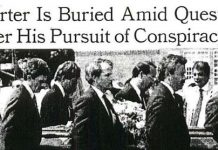
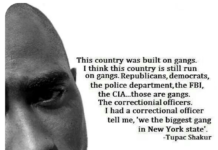
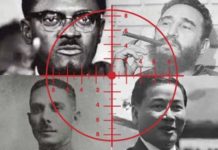
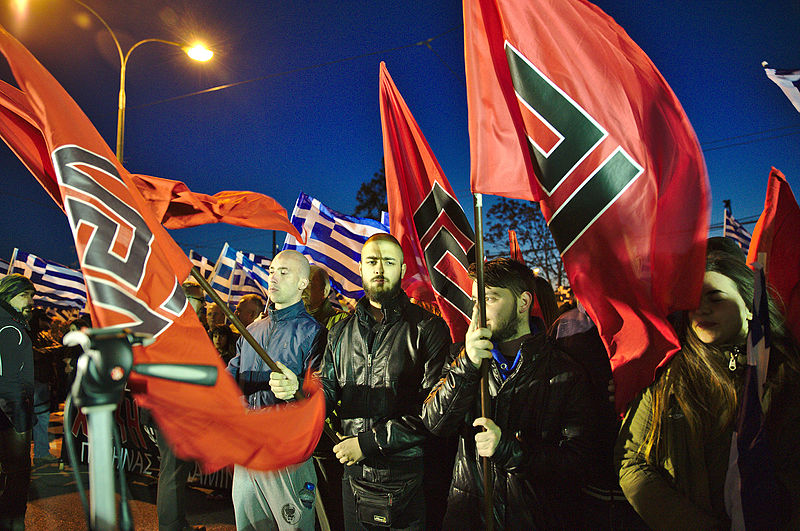

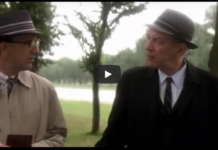



[…] This article was first published on December 13, 2021, by CovertAction Magazine with the title “Was America’s Outspoken Catholic Priest and Best-Selling Author, Thomas Merton, ‘Eliminated’ Because of His Outspoken Opposition to the Vietnam War?” https://covertactionmagazine.com/2021/12/13/was-americas-outspoken-catholic-priest-and-best-selling-… […]
[…] Was Thomas Merton “Eliminated” Because of His Outspoken Opposition to the Vietnam War? […]